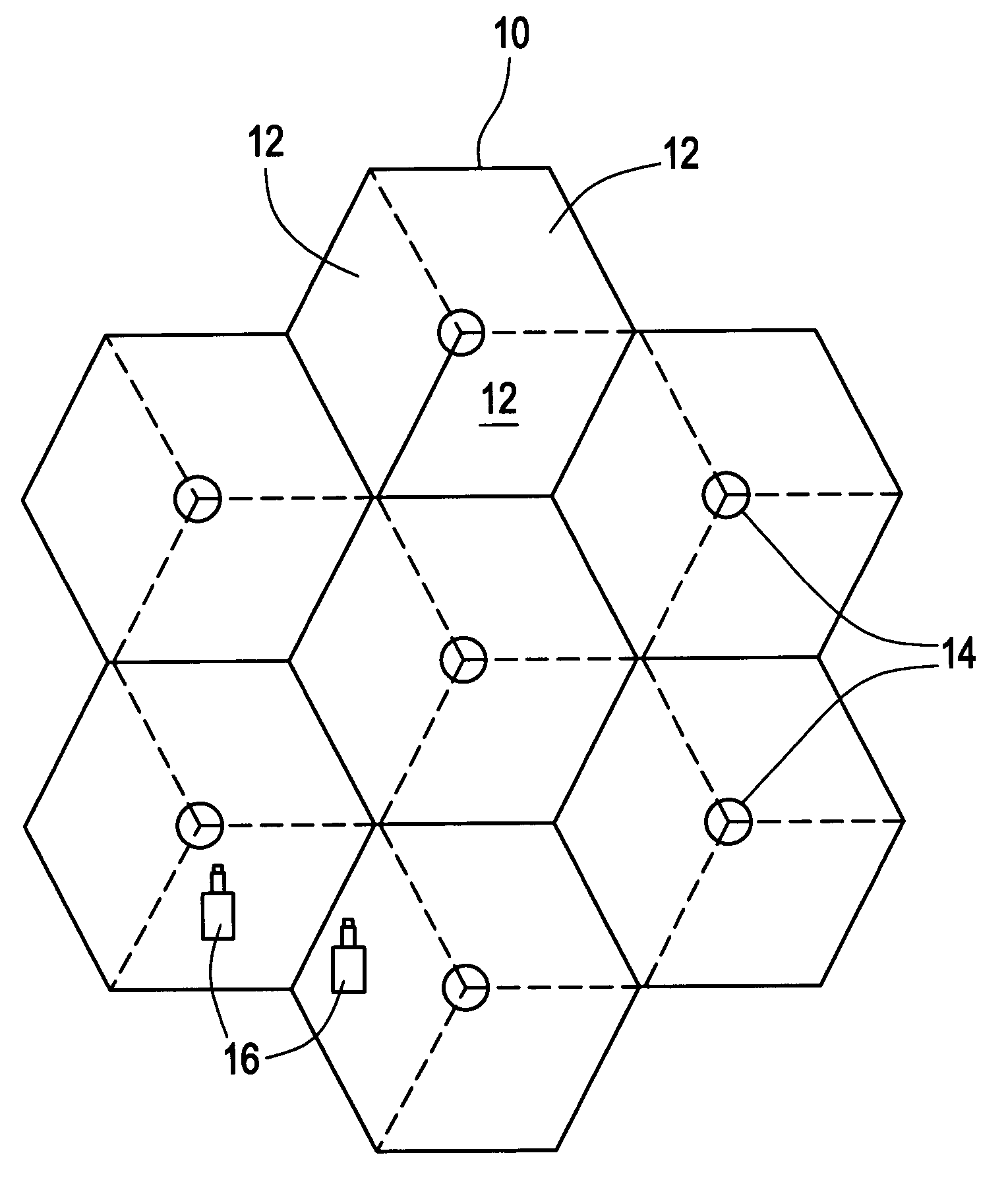Channel rate and physical channel selection in wireless communications networks
- Summary
- Abstract
- Description
- Claims
- Application Information
AI Technical Summary
Benefits of technology
Problems solved by technology
Method used
Image
Examples
first embodiment
ignal Strength Based Rate Selection
[0017]Consider a case where only full rate (FR) and half rate (HR) channels are specified. A strongly received broadcast channel signal strength (R×LEV) implies that a HR channel may provide sufficient quality to the user. Therefore, given the received broadcast channel signal strength measurement C for the serving sector, a reasonable channel rate selection scheme performed at the base station based on the received broadcast signal strength measurement C received from the mobile station is as follows:
[0018]Rate={FRC<T1andNFR>0HRotherwise(1)
where T1 is a threshold determined by empirical study and NFR is the number of idle full rate channels in the sector.
[0019]In this embodiment, calls are packed onto half rate channels regardless of the link quality if there are no idle full rate channels available in the serving sector. Only users with poor signal strength are assigned to full rate channels; thus avoiding the need for constant repackin...
fourth embodiment
t for Lower Rate Channels
[0048]After a channel rate has been selected for communication with a mobile station, the network must determine a physical channel to assign that mobile station. Stated another, a determination is made as to in which physical channel the mobile station will be packed. A full rate physical channel can support transmission by one mobile station at full rate, can support transmission by two mobiles each at half rate, etc.
[0049]Assume a set of M channel rates, (R1, R2, . . . , RM), with R1 having the highest rate. If a channel rate, Ri with i>1, is selected, random channel assignment among all available physical channels that can support rate Ri may not be efficient. For lower rate channels, a prioritized channel assignment method according to the present invention may increase the availability of higher rate channels for future assignment.
[0050]In the prioritized channel assignment or packing method according to the present invention, physical channels that al...
PUM
 Login to View More
Login to View More Abstract
Description
Claims
Application Information
 Login to View More
Login to View More - R&D
- Intellectual Property
- Life Sciences
- Materials
- Tech Scout
- Unparalleled Data Quality
- Higher Quality Content
- 60% Fewer Hallucinations
Browse by: Latest US Patents, China's latest patents, Technical Efficacy Thesaurus, Application Domain, Technology Topic, Popular Technical Reports.
© 2025 PatSnap. All rights reserved.Legal|Privacy policy|Modern Slavery Act Transparency Statement|Sitemap|About US| Contact US: help@patsnap.com



